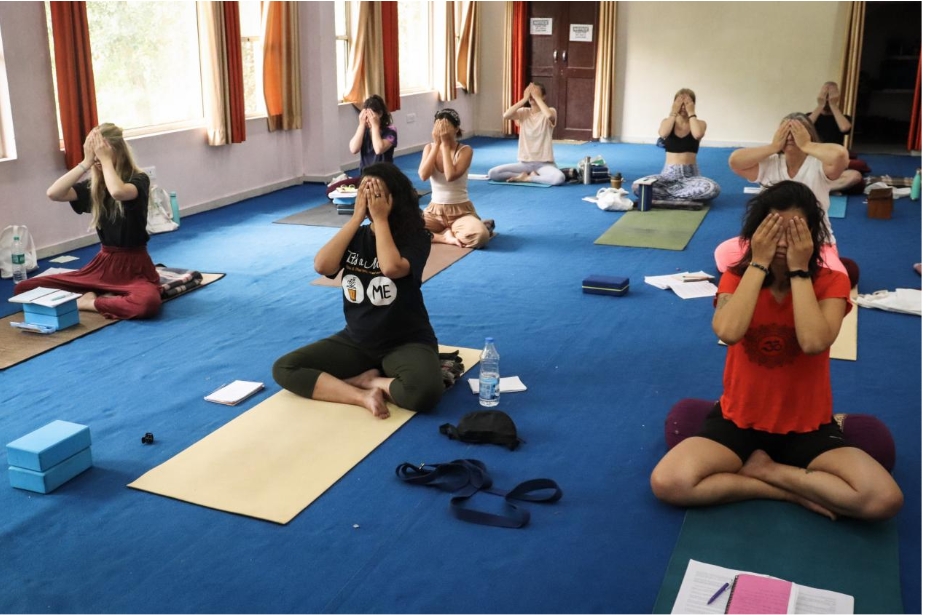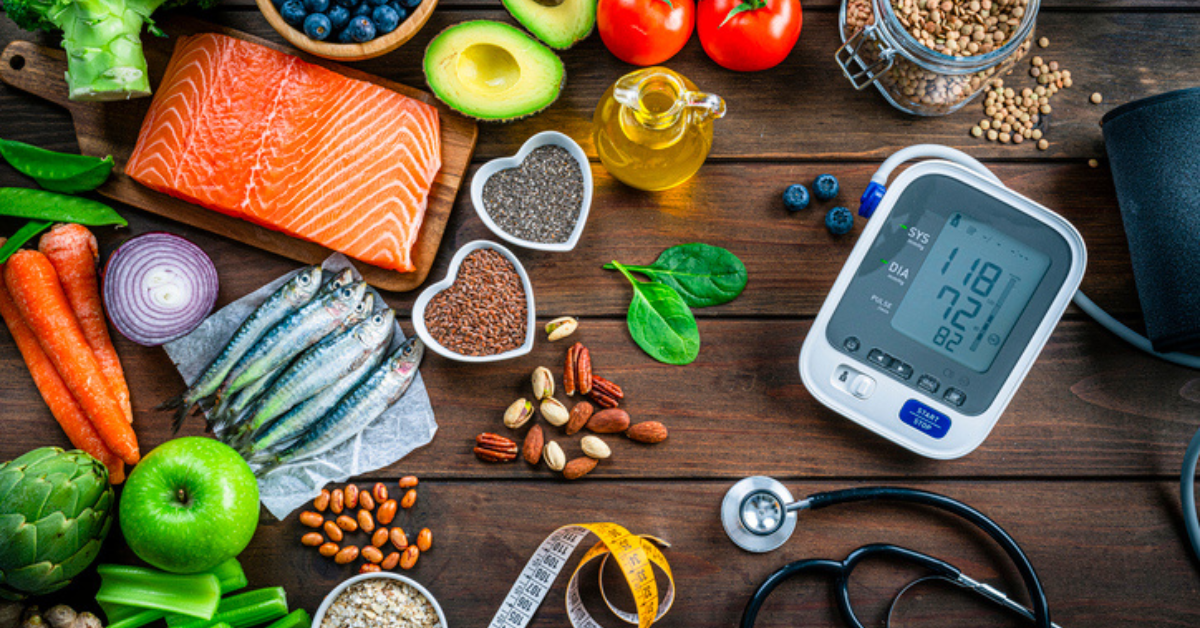HEALTH
How Health Supplements Can Help You Stay Active as You Age

As we age, our bodies naturally lose muscle mass, bone density, and energy levels. It becomes more difficult to be active, but with the right men’s supplements, we can sustain strength, mobility, and health.
Even though a balanced diet is important, it may not always be enough to compensate for the body’s demands. That’s where men’s health supplements enter the picture. By enhancing muscle function, bone and joint health, energy production, and brain health, top men’s supplements can assist in sustaining an active and rewarding lifestyle.
Learning About the Aging Body and Nutritional Requirements
The body is affected by aging in several ways. Metabolism slows, muscle mass decreases, and joints stiffen. Nutritional deficiencies can exacerbate these effects, leading to fatigue, osteoporosis, and decreased mental capacity. Many men struggle to obtain sufficient nutrients through diet alone, making it important to find ways to support overall health. Addressing these deficiencies can reduce the risk of osteoporosis, cardiovascular disease, and cognitive impairment, all of which affect long-term well-being.
Incorporating balanced nutrition and health supplements for men may play a role in maintaining strength and vitality as they age. Aging also diminishes the body’s capacity to absorb vital vitamins and minerals from diets. Even a well-balanced diet might not be enough to keep things running at their best.
For this reason, taking supplements as part of daily regimens is an efficient method for replacing lost nutrients as well as maintaining long-term wellness. Knowing which supplements work for muscles, bones, and brain health during the process of aging is the key to maintaining an active, productive life.
Essential Health Supplements to Stay Active
Selecting the most effective supplements for men guarantees that the body is provided with the necessary nutrients that fuel energy, mobility, and mental focus. Effective supplements assist in reversing the inevitable effect of aging, and advancing general function, and vitality. A balanced supplement program keeps the body energized, prevents the occurrence of age-related diseases, and maximizes overall performance in physical as well as mental functions.
Bone and Joint Health Supplements
Strong bones and supple joints are essential for remaining active. When bones are deprived of proper nutrients, they become brittle, and joints become stiff, compromising movement. Glucosamine and chondroitin maintain cartilage integrity and minimize stiffness in joints, ensuring flexibility. Calcium and vitamin D ensure bones remain strong, reducing the risk of fractures and osteoporosis. Collagen is also important for joint health, minimizing wear and tear in connective tissues. Bone and joint health supplements enable men to stay mobile and keep on enjoying the things that they like doing.
Osteoarthritis and joint aches become increasingly prevalent with increasing age. As time passes, cartilage wears away, creating pain and stiffness. Supplements like MSM (methylsulfonylmethane) may further help prevent inflammation and pain in the joints. Omega-3 fatty acids, which are often present in fish oil, also have anti-inflammatory properties that shield joints from excessive wear and tear. These nutrients are especially beneficial for men who play sports or engage in high-impact activities, as they prevent injury and support long-term bone and joint health.
Muscle Strength and Recovery
The ability to maintain muscle strength declines with age. With proper exercise and the appropriate men’s supplements, muscle loss can be retarded and recovery facilitated. Protein supplements, whey or vegetables, assist in maintaining muscle mass. Branched-chain amino acids (BCAAs) help for quicker muscle recovery, lowering soreness and enhancing endurance. Magnesium helps in muscle function by avoiding cramps and relaxing after exercise. These supplements are first taken to ensure men can maintain strength and avoid the loss of muscle that comes with aging.
Testosterone levels decrease with age, and this leads to muscle loss and slower recovery times. Supplements like zinc and vitamin D enhance healthy testosterone production, supporting muscle function and energy levels. Creatine monohydrate, a well-known muscle-support supplement, enhances strength and endurance by supplying cells with the energy required for high-intensity exercise. By adding these essential nutrients to a daily regimen, men can preserve lean muscle mass, enhance performance, and avoid the loss of mobility that comes with aging.
Energy and Metabolism Support
Fatigue is among the most prevalent symptoms of elderly men. Men’s health supplements that enhance metabolism and energy production significantly impact one’s daily life. B vitamins, such as B12 and B6, maximize metabolic activity and increase energy. Coenzyme Q10 (CoQ10) has a beneficial role in terms of cardiovascular health and the maintenance of cellular energy production. Iron is engaged in the transport of oxygen, fight fatigue, and improve endurance. Hence these top-rated supplements for men carry these crucial nutrients to keep your body going and on its feet to carry out day-to-day tasks without undue fatigue.
In addition, adaptogenic plants such as ashwagandha and Rhodiola rosea assist the body in dealing with stress and fighting fatigue. These plants promote adrenal function, maintaining energy levels throughout the day. L-carnitine, an amino acid that facilitates the transport of fatty acids to be used as fuel, is another great supplement for maintaining metabolic efficiency. Incorporating these nutrients into daily health regimens allows men to bypass the lethargy that so often accompanies aging and continue living an active, energetic life.
Brain Health and Cognition
Not only the body, but also the brain is affected by aging. Brain health supplements preserve memory, concentration, and overall cognitive function. Omega-3 fatty acids, particularly DHA and EPA, inhibit inflammation and maintain brain function. Ginkgo biloba enhances blood flow to the brain, improving memory and concentration. L-theanine promotes relaxation and concentration, reversing mental fatigue that is common with aging. Incorporating brain health supplements into a daily routine ensures mental sharpness and alertness, making it less challenging to stay focused and productive.
Phosphatidylserine, a cell membrane fatty acid, enhances memory and cognitive function. Nootropics such as bacopa monnieri and lion’s mane mushroom enhance mental acuity further and retard the onset of age-related cognitive decline. Men who want to stay mentally sharp well into old age should prioritize these supplements for long-term brain health.
Conclusion
These situations aren’t inevitable. With specific health supplements for men, active and powerful can be possible even in old age. The best supplements for men support muscle recovery, boost energy, enhance brain health, and maintain bone and joint health.
Bone and joint health supplements help keep men on their feet, while brain health supplements help keep mental sharpness intact. By using supplements in addition to a healthy lifestyle, men can keep doing what they enjoy without restriction.
FAQs
Which supplements are most effective for maintaining bone and joint health as I age?
Glucosamine, chondroitin, calcium, and vitamin D are essential for keeping bones strong and joints flexible. Collagen and omega-3 fatty acids further reduce stiffness and inflammation.
How can supplements help sustain muscle mass and prevent age-related weakness?
Protein, BCAAs, and creatine support muscle repair and growth, while vitamin D and zinc help maintain testosterone levels for strength. Combining supplements with resistance training maximizes muscle retention.
What role do brain health supplements play in preventing cognitive decline?
Omega-3 improves memory, focus, and blood circulation to the brain. Nootropics like lion’s mane mushrooms enhance neuroprotection and long-term cognitive function.
HEALTH
Yoga and Mindfulness: Daily Integration

In a world that often feels chaotic, noisy, and demanding, the search for balance is more than a desire—it’s a necessity. Many of us long for calm amidst the chaos, clarity amidst confusion, and a deeper connection to ourselves and others. For centuries, yoga and mindfulness have offered a pathway to this equilibrium, not just as practices, but as ways of living.
“Yoga and Mindfulness: Daily Integration“ was born from a simple yet profound realization: transformation doesn’t come from occasional effort, but from consistent, intentional action woven into the fabric of daily life. Whether you are new to yoga and mindfulness or seeking to deepen your journey, this article invites you to explore these timeless practices through a modern, practical lens. You will find guidance, reflections, and tools to help you bring awareness, movement, and peace into your everyday moments—from waking up in the morning to winding down at night.
Yoga and Mindfulness: Daily Integration for a Balanced Life
In today’s fast-paced, hyperconnected world, the idea of slowing down feels almost revolutionary. Yet, more and more people are turning to ancient practices like yoga and mindfulness to counterbalance stress, restore inner peace, and enhance their overall well-being. While attending a weekly yoga class or meditating occasionally is beneficial, the true magic unfolds when these practices are integrated into daily life. This blog explores how to do just that—seamlessly and sustainably.
Understanding Yoga and Mindfulness
What is Yoga?
Yoga is far more than a physical workout. Rooted in ancient Indian philosophy, yoga is a holistic system that aims to unite the body, mind, and spirit. It encompasses physical postures (asanas), breath control (pranayama), ethical principles, and meditation.
What is Mindfulness?
Mindfulness is the practice of being fully present in the moment, without judgment. It involves observing thoughts, feelings, and bodily sensations as they arise, cultivating awareness and acceptance.
Together, yoga and mindfulness create a powerful synergy that fosters resilience, clarity, and peace.
Why Daily Integration Matters
Practicing yoga and mindfulness once in a while is like watering a plant sporadically—some benefit may appear, but growth will be stunted. Daily integration creates momentum, rewires neural pathways, and embeds these practices into your lifestyle, yielding profound results:
- Reduced stress and anxiety
- Improved concentration and mental clarity
- Enhanced emotional regulation
- Better sleep
- Greater sense of purpose and connection
How to Integrate Yoga and Mindfulness Daily
Here are practical, accessible strategies to weave these practices into your day—from morning to night.
Morning: Set the Tone
1. Mindful Awakening
- Before checking your phone, take a few moments to breathe deeply.
- Observe your thoughts without engaging them.
- Set a simple intention like “I will move through this day with ease and compassion.”
2. Sun Salutations (Surya Namaskar)
- A 5–10 minute gentle yoga flow energizes your body and clears mental fog.
- Pair the movement with your breath to promote awareness.
3. Journaling or Gratitude Practice
- Spend five minutes noting what you’re grateful for or how you want to feel during the day.
Midday: Anchor Yourself
1. Desk Yoga or Stretching
- Take a short break every hour to stretch your neck, shoulders, and spine.
- Even seated cat-cow stretches can relieve tension and re-center you.
2. Mindful Eating
- Step away from screens and eat slowly.
- Savor each bite, noticing the texture, taste, and aroma of your food.
3. Two-Minute Breathing Check-In
- Set a reminder to pause and take 5 deep breaths every couple of hours.
- It recalibrates your nervous system and boosts focus.
Evening: Reflect and Unwind
1. Gentle Hatha Yoga Practice
- Opt for calming poses like child’s pose, legs up the wall, or reclining twist.
- Hold each for 1–3 minutes to activate the parasympathetic nervous system.
2. Mindful Reflection
- Ask yourself:
- What was one moment I was truly present today?
- What challenged me, and how did I respond?
- What am I proud of?
3. Meditation or Breathwork
- A 10-minute meditation before bed helps quiet the mind.
- Try alternate nostril breathing (Nadi Shodhana) for balance and relaxation.
Mindfulness Off the Mat
Yoga and mindfulness aren’t limited to specific times or rituals. True integration means bringing awareness into everything you do:
- While commuting, observe your surroundings without judgment.
- In conversations, truly listen without preparing your response.
- When working, bring full attention to one task at a time.
- When walking, feel your feet on the ground and the rhythm of your steps.
Even mundane tasks—washing dishes, folding clothes—become meditative when approached with mindfulness.
Must Visit: Yoga Teacher Training in Rishikesh
Tools for Daily Support
- Apps: Insight Timer, Calm, Headspace, Down Dog
- Reminders: Use sticky notes, phone alerts, or a mala to cue mindfulness.
- Community: Join a local or virtual yoga class or mindfulness circle for accountability.
Begin Where You Are
You don’t need an hour a day or a fancy mat to begin. Start small—one breath, one stretch, one moment of presence. Consistency matters more than intensity.
“In the midst of movement and chaos, keep stillness inside of you.” — Deepak Chopra
Daily Integration of Yoga and Mindfulness through a Yoga TTC
Yoga and mindfulness are time-tested pathways toward that inner reconnection. But there’s a profound difference between occasionally practicing these tools and fully integrating them into daily life.
Enter the 200 hour Yoga Teacher Training Course (TTC)—a deeply immersive experience that can transform your understanding of yoga and give you the tools to live more mindfully every single day. Whether or not you plan to teach, a 200-hour TTC can serve as a personal reset button, a spiritual deep dive, and a blueprint for intentional living.
Conclusion:
As you reach the end of this journey through Yoga and Mindfulness: Daily Integration, remember that the true essence of these practices lies not in grand gestures or rigid routines, but in the small, conscious choices you make each day. Every mindful breath, every moment of stillness, and every intentional movement brings you closer to a life of greater balance, clarity, and compassion.
Yoga and mindfulness are not destinations—they are lifelong companions. They gently guide us back to ourselves when we feel disconnected, offer calm in moments of chaos, and remind us that peace is not something to be found, but something to be cultivated from within.
By weaving these practices into the fabric of your daily life, you are nurturing not just your body and mind, but your entire being. The ripples of awareness you create will extend beyond your personal practice, positively touching your relationships, your work, and the world around you.
As you move forward, allow yourself grace. There will be days of flow and days of resistance, but each step—no matter how small—brings growth. Continue to show up with curiosity, patience, and kindness toward yourself.
May your journey with yoga and mindfulness continue to evolve, offering you grounding in the present and openness to all that life has to offer.
The mat will always be there. The breath will always guide you home.
HEALTH
Everything You Need to Know About Massage Therapy: Types, Benefits, and Tips
Massage therapy has been practiced for thousands of years and continues to be one of the most popular and effective methods for promoting relaxation, relieving pain, and enhancing overall wellness. Whether you’re dealing with chronic tension, recovering from an injury, or simply seeking a little self-care, massage therapy offers something for everyone. In this article, we’ll explore the most common types of massage, the benefits you can expect, and some practical tips to help you get the most from your session.
What Is Massage Therapy?
Massage therapy is the manual manipulation of soft tissues in the body—including muscles, connective tissues, tendons, and ligaments—using various techniques. It’s used to treat physi
cal ailments, reduce stress, and promote general well-being. Licensed massage therapists are trained to understand anatomy and use different styles and pressures based on your individual needs.Common Types of Massage Therapy
Understanding the different types of massage can help you choose the right one based on your body’s needs, goals, and preferences.
1. Swedish Massage
Often recommended for beginners, Swedish massage is a gentle, relaxing technique that uses long strokes, kneading, and circular movements to ease muscle tension and improve circulation. It’s perfect for stress relief and relaxation.
2. Deep Tissue Massage
This technique targets deeper layers of muscles and connective tissue. It’s ideal for chronic aches and pains, such as a stiff neck, upper back, or tight legs. Deep tissue massage can feel intense but offers significant relief for long-term tension.
3. Hot Stone Massage
Smooth, heated stones are placed on specific parts of the body and used as massage tools. The warmth helps relax muscles, improve blood flow, and provide a soothing, meditative experience.
4. Thai Massage
Unlike most massage types, Thai massage involves stretching and deep massage. You remain clothed, and the therapist moves your body into yoga-like positions. It’s energizing and improves flexibility and circulation.
5. Sports Massage
Geared toward athletes or physically active individuals, sports massage helps prevent injuries, improve performance, and speed up recovery. It combines techniques from Swedish and deep tissue massages with assisted stretching.
6. Prenatal Massage
Designed specifically for pregnant women, prenatal massage relieves many of the physical discomforts of pregnancy such as back pain, swollen legs, and fatigue. It’s a safe and nurturing way to support both mother and baby.
Key Benefits of Massage Therapy
Massage therapy isn’t just a luxury—it offers a range of physical, mental, and emotional benefits that are backed by science.
1. Reduces Stress and Anxiety
Massage helps lower cortisol levels (the body’s stress hormone) while increasing serotonin and dopamine, which promote happiness and relaxation.
2. Relieves Muscle Tension and Pain
Whether it’s from sitting at a desk all day or intense physical activity, massage helps release tight muscles, break up knots, and reduce soreness.
3. Improves Circulation
The pressure from massage moves blood through congested areas, enhancing oxygen flow and promoting cell repair and healing.
4. Boosts Immune Function
Studies suggest that massage can improve immune system function by increasing lymph flow, which helps your body remove toxins and fight illness.
5. Enhances Sleep Quality
Massage has a calming effect on the nervous system, making it easier to fall and stay asleep. It’s particularly helpful for people with insomnia or sleep disorders.
6. Supports Mental Clarity and Mood
Beyond physical relief, massage promotes a sense of well-being, focus, and clarity. It’s often used as a complementary therapy for depression and anxiety.
-
Tips for Getting the Most Out of Your Massage
To fully benefit from massage therapy, there are a few simple tips you can follow before, during, and after your session.
1. Communicate With Your Therapist
Let your massage therapist know your goals for the session—whether it’s relaxation, pain relief, or specific problem areas. Don’t hesitate to speak up about pressure preferences or discomfort.
2. Hydrate Before and After
Drinking water helps flush out toxins released during the massage and prevents dehydration, especially after deep tissue work.
3. Arrive Early and Relax
Arriving early gives you time to relax and settle in, especially if you’re getting massage for stress relief.Being rushed can make it harder to unwind.
4. Avoid Heavy Meals Before Your Appointment
A light snack is fine, but eating a la[ez-tocrage meal can make lying down for an hour uncomfortable. Go for something light if you’re hungry.
5. Don’t Be Afraid to Try Different Styles
Each massage type offers different benefits. If one style doesn’t work for you, try another. Everyone responds differently, so find what suits your body best.
6. Schedule Regular Sessions
While one massage can bring immediate benefits, regular sessions create cumulative effects that support long-term health and wellness.
Final Thoughts
Massage therapy is a powerful tool for managing physical discomfort, improving mental health, and nurturing overall well-being. With so many different types and techniques available, there’s a massage style suited for just about everyone. Whether you’re a busy professional, an athlete, a parent, or someone simply seeking relief from the hustle of daily life, incorporating massage into your wellness routine can be a game-changer. So take a deep breath, book that session, and let your body thank you.
HEALTH
Timeshealthmag Nutrition: Unlocking the Secrets of Optimal Health

In the fast-paced world of wellness, it’s easy to get lost in trends and buzzwords. But when it comes to practical, research-based advice, timeshealthmag nutrition has become a reliable guide for those striving to lead healthier lives. From macro breakdowns to mindful eating and lifestyle tips, TimesHealthMag stands out by blending science with everyday accessibility.
Understanding nutrition isn’t just about counting calories or avoiding carbs. It’s about knowing what fuels your body, how to support your long-term health, and how to adapt to the ever-evolving needs of your lifestyle. Let’s dive deep into how timeshealthmag nutrition is redefining wellness through thoughtful, modern insights that anyone can follow.
The Rise of Timeshealthmag Nutrition
Over recent years, TimesHealthMag has positioned itself as a go-to source for nutrition guidance that cuts through the noise. In a world brimming with misinformation, timeshealthmag nutrition offers content that’s balanced, evidence-driven, and easy to implement. Its focus spans across various demographics, ensuring relevance whether you’re a college student, busy professional, or senior citizen.
This trusted platform champions holistic health, advocating for personalized nutrition strategies that consider mental, physical, and emotional well-being.
Why Nutrition Matters More Than Ever
Proper nutrition is no longer just about weight management—it’s a cornerstone of overall well-being. With the growing awareness of chronic illnesses and lifestyle-related diseases, people are more motivated than ever to take control of their health. Here’s why timeshealthmag nutrition places such strong emphasis on nutritional literacy:
-
Prevention of Diseases: A nutrient-rich diet can help ward off heart disease, diabetes, and certain cancers.
-
Mental Clarity: The brain thrives on vitamins and minerals. Balanced meals can significantly impact mood and cognitive function.
-
Longevity: Quality nutrition supports aging gracefully, enhancing mobility, immunity, and skin health.
Timeshealthmag nutrition educates readers not just on what to eat, but why certain food choices are pivotal for different life stages.
Core Principles of Timeshealthmag Nutrition
Eat Whole, Not Processed
One of the pillars of timeshealthmag nutrition is choosing whole foods over processed ones. Whole foods are rich in fiber, vitamins, and antioxidants, supporting digestive and cellular health.
Actionable Tip: Aim to fill at least 70% of your plate with foods that don’t come in packages—think leafy greens, lean meats, nuts, seeds, and fresh fruits.
Balance Macronutrients
TimesHealthMag often emphasizes the importance of balancing macronutrients: carbohydrates, proteins, and fats. Each plays a crucial role:
-
Carbohydrates: The body’s main source of energy.
-
Proteins: Essential for muscle repair and hormone regulation.
-
Fats: Critical for brain health and nutrient absorption.
Expert Insight: According to registered dietitians featured in timeshealthmag nutrition, skipping one macronutrient category can lead to nutrient imbalances and energy crashes.
Hydration is Non-Negotiable
Often overlooked, hydration is central to effective digestion, nutrient transport, and detoxification. TimesHealthMag consistently reminds readers that staying hydrated helps everything from joint health to skin radiance.
Actionable Tip: Start your day with a glass of water and aim for at least eight cups daily, more if you’re active or live in a hot climate.
Mindful Eating and Behavior Change
Mindful eating is a recurring theme in timeshealthmag nutrition articles. It’s not just what you eat, but how you eat that matters. Eating slowly, savoring each bite, and paying attention to hunger cues can reduce overeating and improve digestion.
Actionable Tip: Put your fork down between bites and chew thoroughly. This small shift can lead to better portion control and more satisfaction with meals.
Tailored Nutrition for Different Lifestyles
Nutrition for Busy Professionals
If you’re always on the go, timeshealthmag nutrition offers hacks for maintaining healthy habits even with a packed schedule. Meal prepping, smart snacking, and nutrient-dense smoothies are all highlighted solutions.
Actionable Tip: Batch cook grains, proteins, and veggies over the weekend to build quick weekday meals.
Nutrition for Fitness Enthusiasts
For those with fitness goals, nutrient timing and recovery matter. TimesHealthMag focuses on the synergy between nutrition and performance, especially emphasizing post-workout meals.
Expert Insight: A mix of protein and carbs within 30 minutes after exercising can accelerate recovery and muscle synthesis.
Nutrition for Aging Adults
As we age, nutrient absorption declines. TimesHealthMag recommends calcium-rich foods, omega-3 fatty acids, and fiber to support bone health, brain function, and digestive efficiency.
Actionable Tip: Include fatty fish like salmon twice a week and increase leafy greens for vitamin K and iron.
Trending Topics in Timeshealthmag Nutrition
Gut Health and the Microbiome
The gut microbiome has gained attention for its role in immunity, mood, and metabolism. Timeshealthmag nutrition regularly explores fermented foods, prebiotics, and probiotic-rich diets to support gut diversity.
Popular Picks: Yogurt, kimchi, sauerkraut, and fiber-rich fruits.
Plant-Based Diets
Plant-forward eating isn’t just a trend—it’s a sustainable way to support your body and the planet. Whether fully vegan or flexitarian, TimesHealthMag promotes plant diversity to meet nutritional needs without compromising flavor.
Actionable Tip: Swap meat with legumes like chickpeas or lentils a few times a week to reduce saturated fat intake.
Intermittent Fasting
Fasting protocols have become mainstream, and timeshealthmag nutrition approaches the topic with caution and balance. It recognizes the potential metabolic benefits while acknowledging the need for individualization.
Expert Insight: Fasting isn’t suitable for everyone. Always consult a healthcare provider before attempting new dietary patterns.
Vitamins and Supplements: Necessary or Not?
TimesHealthMag encourages getting nutrients from food first, but recognizes that supplements can be helpful in cases of deficiency or restricted diets.
Key Takeaways:
-
Vitamin D may be necessary in low-sunlight climates.
-
B12 supplementation is crucial for vegans.
-
Omega-3 supplements can support heart health if fish intake is low.
Actionable Tip: Get annual blood tests to track vitamin levels and adjust your supplement needs accordingly.
Debunking Nutrition Myths
One of the strengths of timeshealthmag nutrition is how it tackles common myths head-on:
-
Myth: Carbs make you fat.
-
Truth: Excess calories make you gain weight, not carbs alone.
-
-
Myth: You need to detox with juices.
-
Truth: Your liver and kidneys already detox your body effectively.
-
-
Myth: Skipping meals boosts weight loss.
-
Truth: It can actually slow metabolism and increase cravings later.
-
TimesHealthMag is committed to separating facts from fiction, making sure readers aren’t misled by internet fads.
Building Sustainable Habits
Quick fixes rarely lead to lasting change. That’s why timeshealthmag nutrition advocates for sustainable, gradual lifestyle shifts instead of drastic diets.
Actionable Tip: Focus on adding more healthy foods rather than cutting out all indulgences. This mindset creates a positive relationship with food.
Expert Insight: Behavioral psychologists suggest that it takes around 66 days to form a new habit. Consistency over perfection is key.
The Role of Emotional Health in Nutrition
Stress, anxiety, and emotional health play a huge role in our eating habits. TimesHealthMag acknowledges that true health is multidimensional.
Tips for managing emotional eating:
-
Practice journaling before meals
-
Use a hunger scale to evaluate true hunger
-
Incorporate mindfulness practices like meditation or yoga
This emotionally intelligent approach sets timeshealthmag nutrition apart by offering support for mental well-being as part of the broader wellness picture.
Recipes and Meal Ideas
To make healthy eating enjoyable, timeshealthmag nutrition frequently shares easy, delicious, and nutrient-packed recipes.
Popular features include:
-
15-minute high-protein breakfasts
-
One-pan veggie-packed dinners
-
Smoothies with superfood boosts
-
Low-sugar dessert swaps
These recipes emphasize ingredients you can find anywhere and show how accessible wellness cooking can be.
Embracing Diversity in Nutrition
There is no one-size-fits-all diet. TimesHealthMag celebrates global cuisines and diverse dietary needs. Whether it’s Mediterranean, South Asian, African, or Latin American cuisine, every food culture has healthful components worth embracing.
Actionable Tip: Rotate spices like turmeric, cumin, or garlic into your meals for flavor and health benefits.
The Power of Community and Shared Goals
Finally, timeshealthmag nutrition thrives on community engagement. The publication frequently features success stories, expert interviews, and social media highlights that reinforce a sense of shared commitment to better health.
Expert Insight: People are more likely to stick with their nutrition goals when supported by a community of like-minded individuals.
Conclusion: Empower Your Wellness Journey with Timeshealthmag Nutrition
Your health journey doesn’t have to be overwhelming. Thanks to the guidance of timeshealthmag nutrition, making informed, sustainable, and nourishing choices has never been more attainable. Whether you’re just starting to pay attention to your plate or you’re deep into your wellness path, the practical tips, expert insights, and inclusive approach of TimesHealthMag can help you thrive.
Let this be your reminder: good nutrition is not about perfection—it’s about progress. Every balanced plate, every mindful moment, and every step toward your goals counts.
Let timeshealthmag nutrition be your daily inspiration for a vibrant, energized, and healthful life.
-

 ENTERTAINMENT4 weeks ago
ENTERTAINMENT4 weeks agoAnimeidhen: Your Gateway to a Unique Anime Universe
-

 TECHNOLOGY4 weeks ago
TECHNOLOGY4 weeks agoAbout Waopelzumoz088: Everything You Need to Know
-

 TECHNOLOGY4 weeks ago
TECHNOLOGY4 weeks agoZryly.com Cybersecurity: Protecting Digital Assets
-

 CRYPTO3 weeks ago
CRYPTO3 weeks agoCrypto30x.com Ocean: The Future of Decentralized Finance
-

 Blog3 weeks ago
Blog3 weeks agoWhat Cilfqtacmitd Help With: Exploring Its Benefits and Use Cases
-

 Lifestyle4 weeks ago
Lifestyle4 weeks agoBlog LuxuryInteriors.org: Ultimate Guide To Redefining Interior Design
-

 TECHNOLOGY3 weeks ago
TECHNOLOGY3 weeks agoTurning YouTube Videos into Multilingual Content with AI
-

 ENTERTAINMENT4 weeks ago
ENTERTAINMENT4 weeks agoCompetitive Edge the Serpentrogue: Mastering Strategy and Tactics
